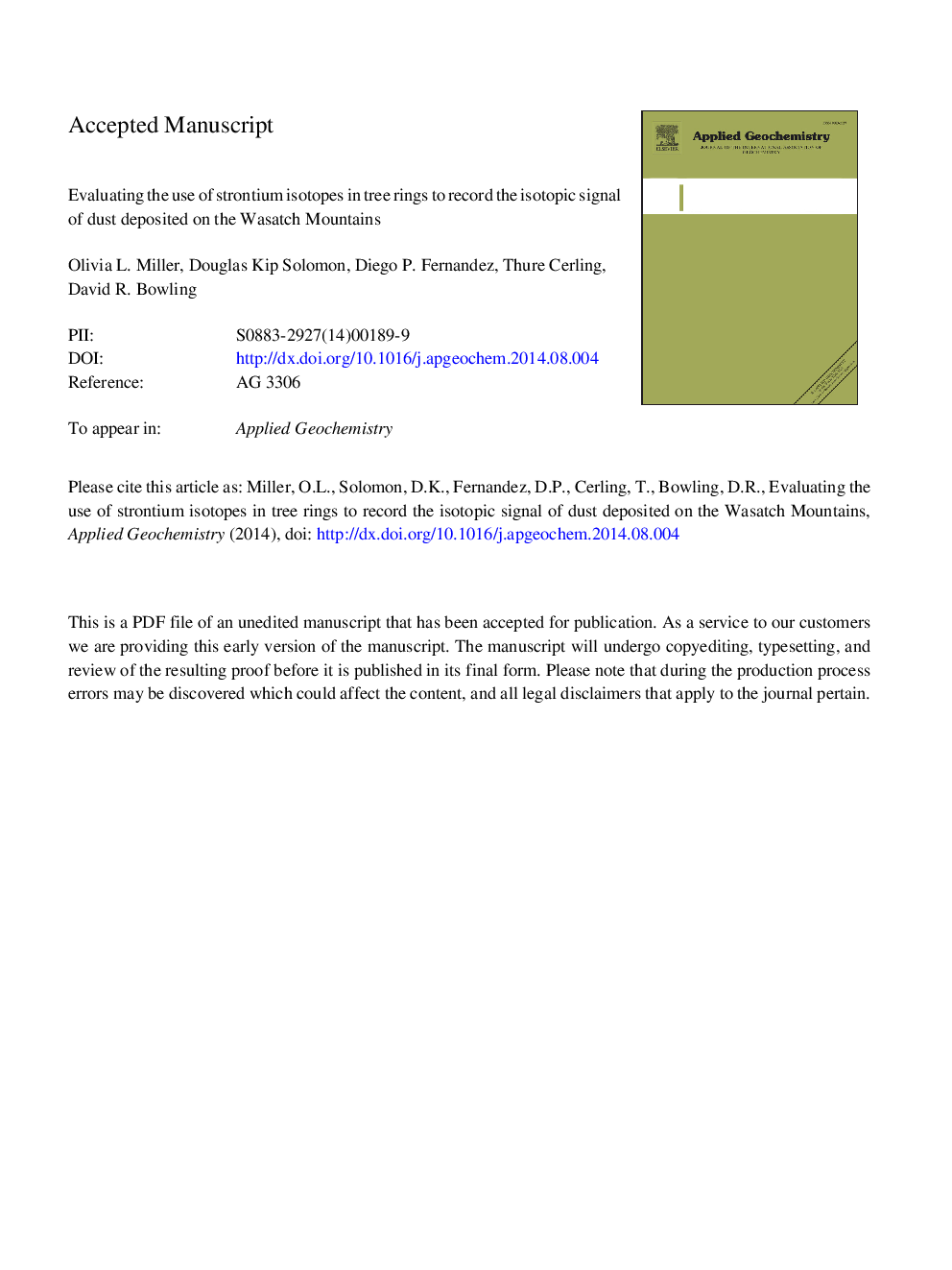| Article ID | Journal | Published Year | Pages | File Type |
|---|---|---|---|---|
| 6335165 | Applied Geochemistry | 2014 | 47 Pages |
Abstract
Dust cycling from the Great Basin to the Rocky Mountains is an important component of ecological and hydrological processes. We investigated the use of strontium (Sr) concentrations and isotope ratios (87Sr/86Sr) in tree rings as a proxy for dust deposition. We report Sr concentrations and isotope ratios (87Sr/86Sr) from atmospherically deposited dust, soil, bedrock, and tree rings from the Wasatch Mountains to investigate provenance of dust landing on the Wasatch Mountains and to determine if a dust Sr record is preserved in tree rings. Trees obtained a majority of their Sr from dust, making them a useful record of dust source and deposition. Dust contributions of Sr to soils were more than 94% over quartzite, 63% over granodiorite, and 50% over limestone. Dust contributions of Sr to trees were more than 85% in trees growing over quartzite, 55% over granodiorite, and between 0% and 92% over limestone. These findings demonstrate that a dust signal was preserved in some tree rings and reflects how Sr from dust and bedrock mixes within the soil. Trees growing over quartzite were most sensitive to dust. Changes in Sr isotope ratios for a tree growing over quartzite were interpreted as changes in dust source over time. This work has laid the foundation for using tree rings as a proxy for dust deposition over time.
Related Topics
Physical Sciences and Engineering
Earth and Planetary Sciences
Geochemistry and Petrology
Authors
Olivia L. Miller, Douglas Kip Solomon, Diego P. Fernandez, Thure E. Cerling, David R. Bowling,
